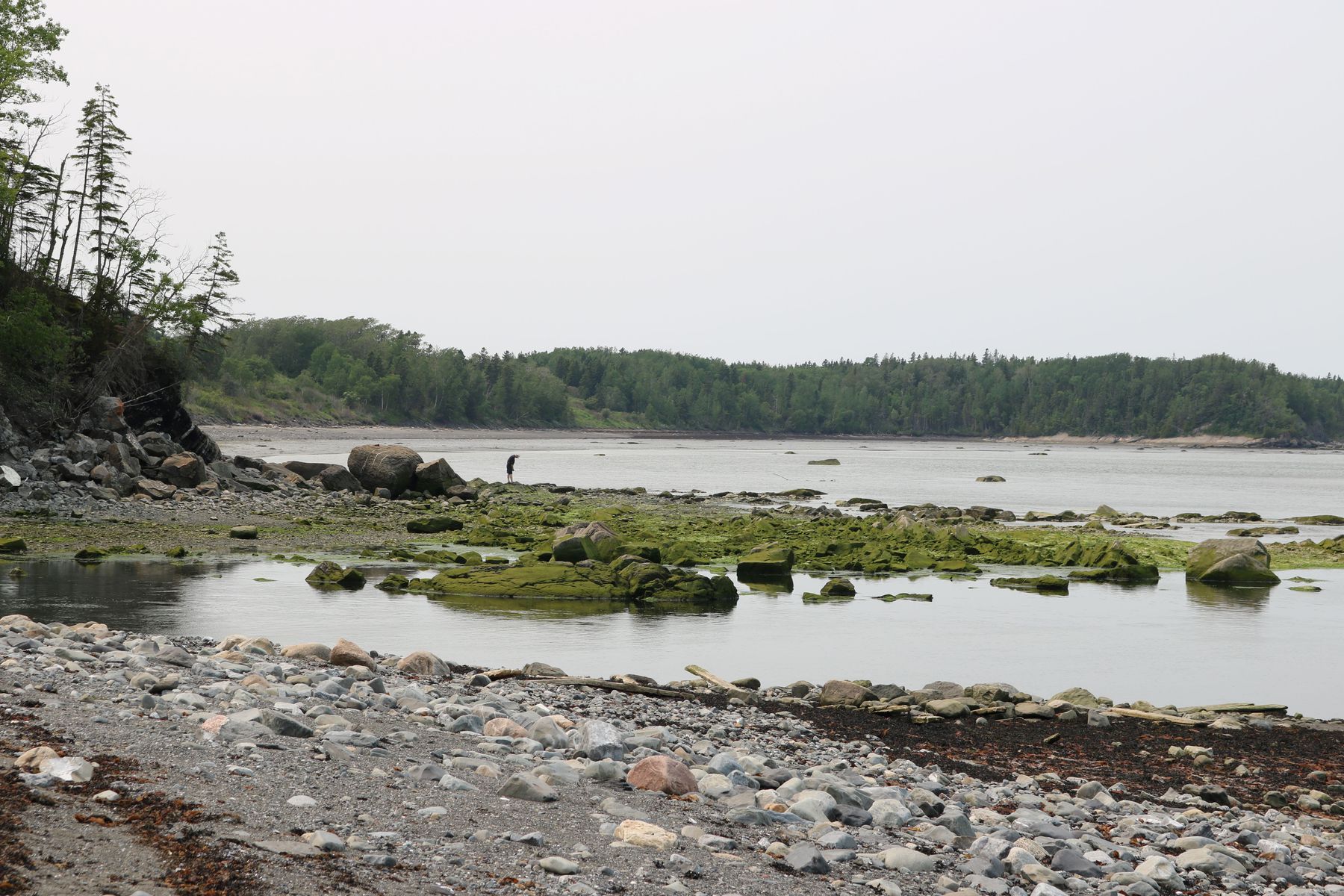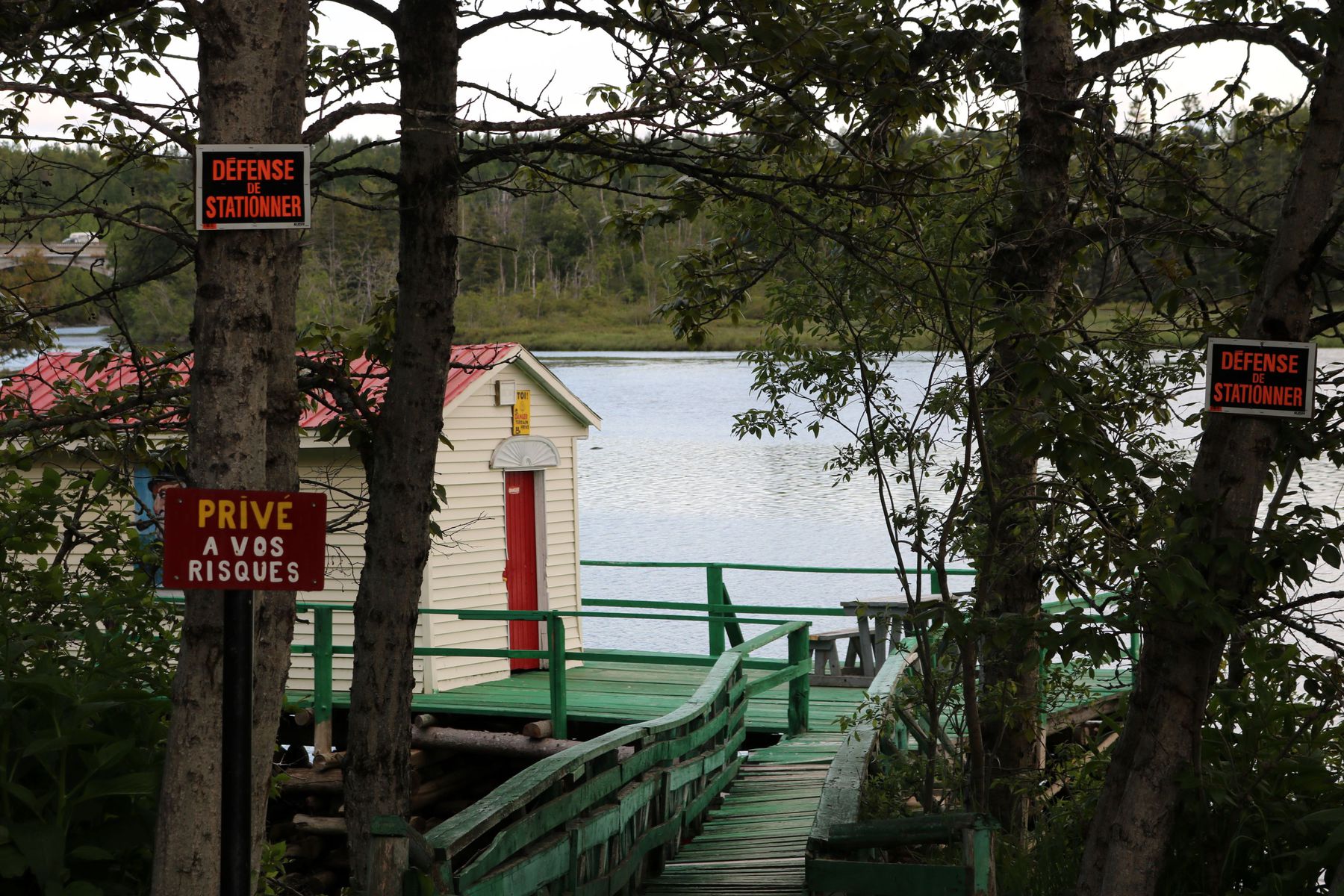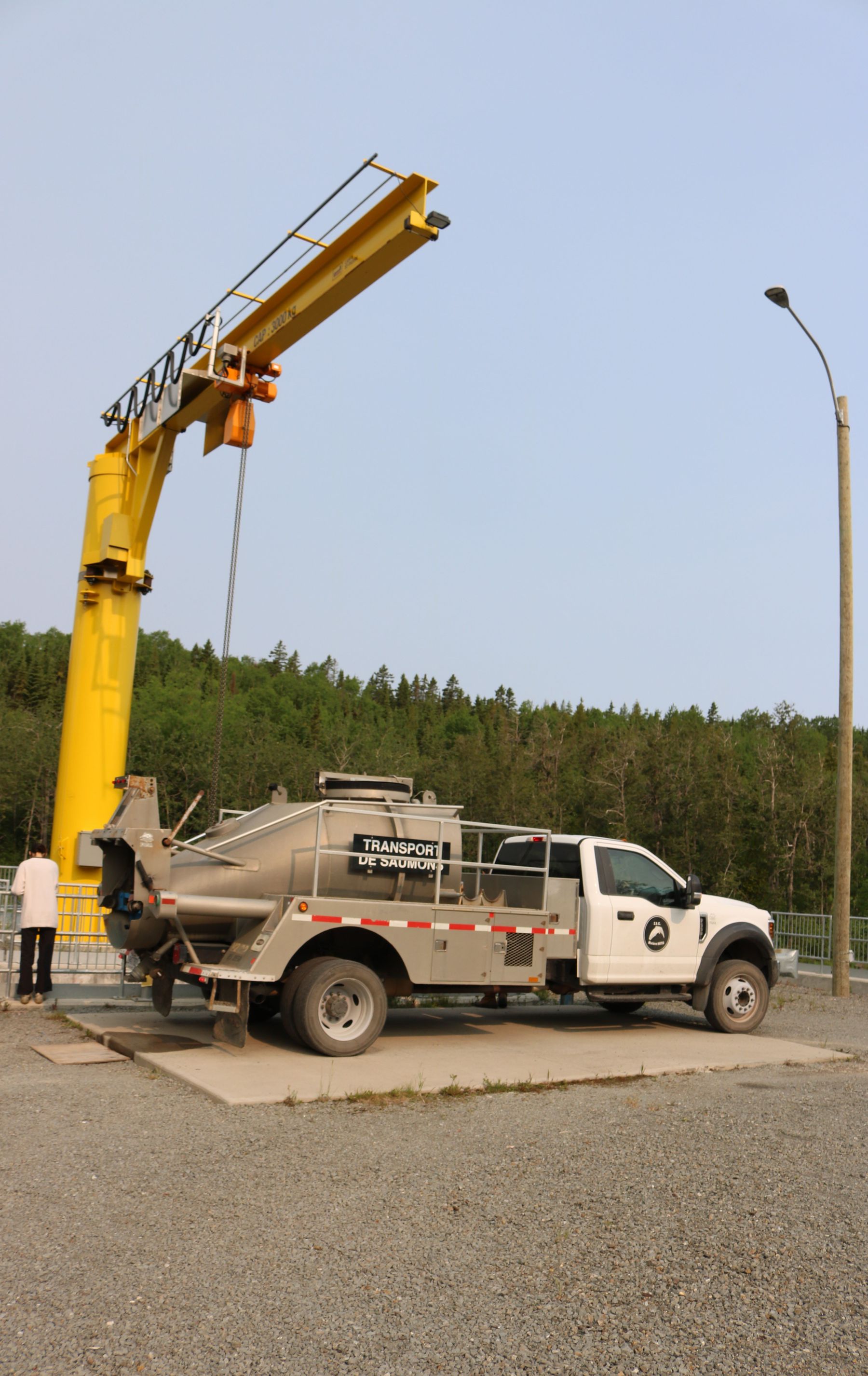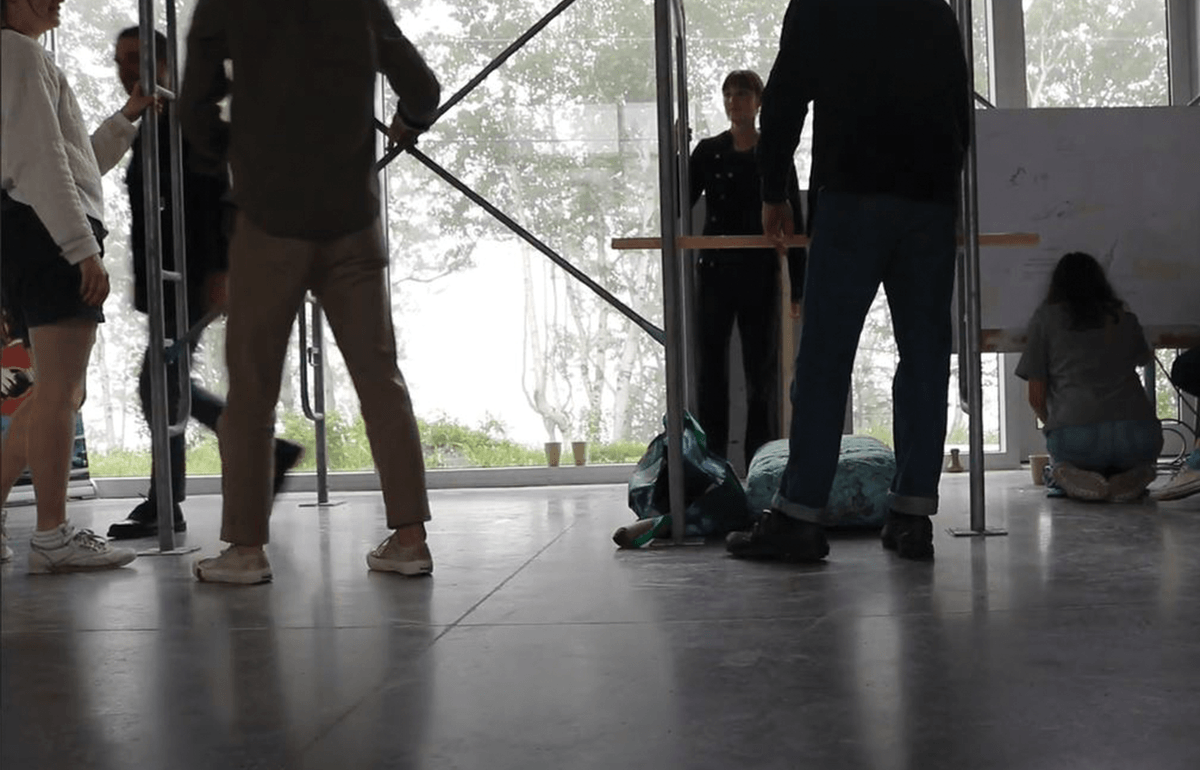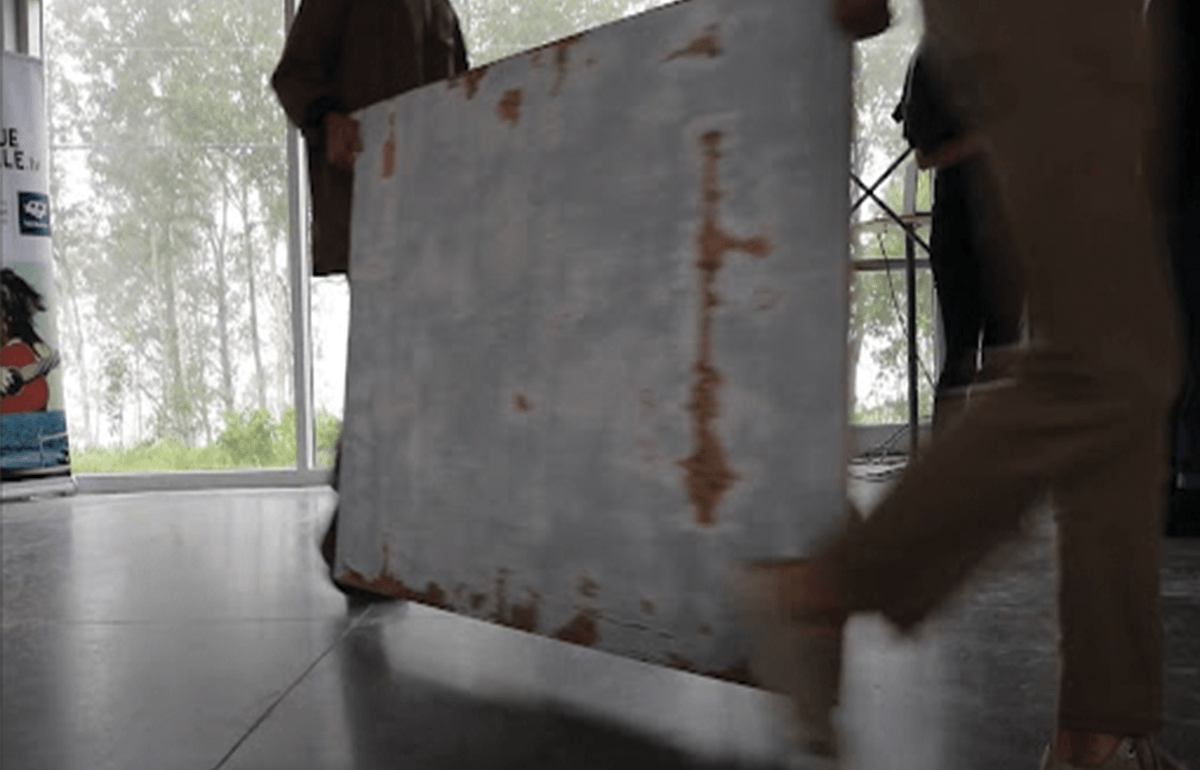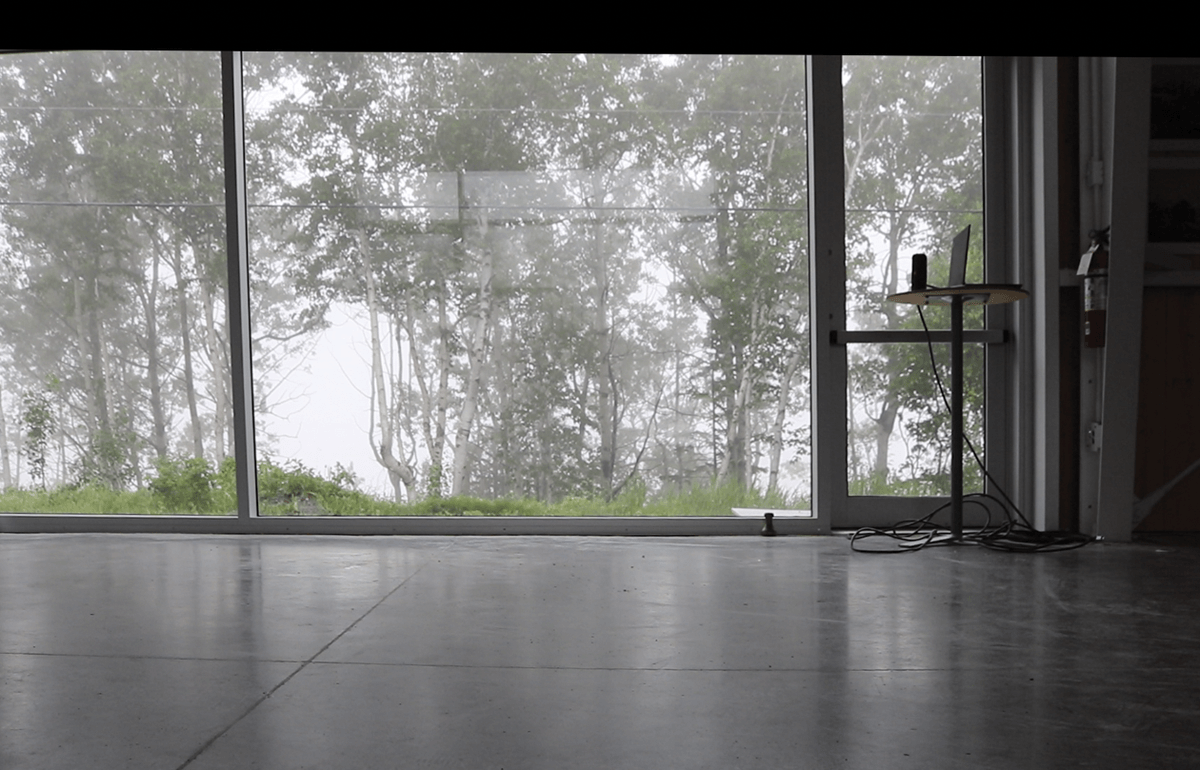River as Invitation
Jia Chen Mi, Marie-Ellen Houde-Hostland, and Hannah Thiessen rethink relationships with the Mitis River
River, Shore, Land is a three year-long project on ecological futures at the Jardins de Métis. A gathering was held at the Mouth of the Mitis River on 21 June 2023 to begin to trace, collect, and share materials, stories, and potential futures of the River and its surrounding ecologies. As the first instalment of the Master’s Students Program exploring the River, shores, and lands at the Jardins de Métis in the lower Saint Lawrence region of Quebec, three architecture students reflect on the role of invitation as a process for researching and designing with river places.
Two currents meet at the mouth of the Mitis River, one that leads a more intimate passage to the Chaleur Bay along the southern coast of Quebec, and the other into the expanse of the Saint Lawrence River, a large waterway that extends into the Atlantic. Shaping the shores along the Jardins de Métis, the River becomes a watery course along which people and elements move between greater watersheds and geographies. The River carries non-humans, including streams of salmon, bass, and eels along their spawning journeys, but also serves as a traveling route and point of rest for Mi’gmaq and Wolastoqiyik people who have long gathered at the base of the River to fish, hunt, trade, and rest during the summer months. As an important site today for fishing, kayaking, and hiking, the River attracts settler communities and tourists to its shores as a direct access point to the water. These currents work as apt forces for encounter; carrying people, fish, sediment, words, and stories and bringing them in relation to each other.
To think of the Mitis River as an especially relational medium subverts colonial designations of property and begins to reframe these sites according to the human, material, and ecological communities that they embed. Thinking, visiting, and researching with waters, we are asked to “de-territorialize how we understand where we live and that we consider ongoing relationships with others” beyond notions of property and site boundary.1
-
Cecilia Chen, Janine MacLeod, and Astrida Neimanis, eds. Thinking with Water, (Montréal; Kingston: McGill-Queen’s University Press, 2013). ↩
While the mouth of the Mitis River was long a meeting place within shared Mi’gmaq and Wolastoqiyik territories, colonial processes of seigneurial grants forcefully readministered connected landscapes into blocks of private property and the banks at the mouth of the River are now owned and managed by the Jardins de Métis. While the river mouth is now open to surrounding settler communities and tourists to enjoy various activities including fishing, swimming, hiking, and spending time along a largely privatized shoreline, Indigenous people in the area continue to face barriers to access. Colonial laws limiting fishing practices, infrastructural barriers to the salmon run, and larger threats to the habitats of spiritually and culturally significant species continue to dispossess Mi’gmaq and Wolastoqiyik people from the River, its larger ecologies, and the practices, stories, and knowledges that embed them there.
To think with the River and all these gatherings helps us to consider river places beyond colonial notions of property, and rather engage with its relationships to different communities and ecologies. In other words, thinking with river places helps us to reflect on the question of access more broadly; what does it mean to be welcome to the Mitis River?
Research as invitation
Studying the River, we became instantly bound up in these relationships. Pushing against settler understandings of research as linear and conclusive, the River itself presents as an alternative medium and process; an embodied kind of knowledge that brings people, practices, stories, and matters together. Beginning by tracing the River and its connections to various people in the region, we experienced firsthand that knowledge and access are inextricably linked. Rather than presenting substantive and conclusive claims, this project creates a series of invitations as direct calls for the Jardins de Métis and local actors to consider more intently Mi’gmaq and Wolastoqiyik access to the River, while simultaneously serving as a slower reflection on the role of relationships in researching and designing more intimately with place. Inspired by the River, these invitations speak to various forms of gathering:
The process of coming together
A first gathering titled “How do you call this place” was held in June 2023 where members of the Wolastoqiyik nation, residents of the surrounding city of Price, employees, and collaborators of the Jardins de Métis were invited to the mouth of the Mitis River to spend time, share stories, and discuss future access to the River. The event served as a way to engage with the River through various mediums and ways of knowing; drawing observations of the river mouth, collecting objects from the shore, responding to historical archival material, and tasting ice cream made of locally harvested seaweed. The event became an exploration of the many layers of knowledge and personal attachments to place—all ways in which the Mitis River, in its own way, invites us to gather.
This event was conceived in part through lessons from Shawn Wilson, an Opaskwayak Cree scholar, who in his book Research is Ceremony reflects on how in Indigenous epistemology “systems of knowledge are built by and around and also form these relationships”.1 Serving as an opportunity for us as three settlers, guests, and researchers to learn about the history and context around the Mitis River, getting people together was just as much a priority. To visit the River, to share stories, to eat together is research in itself. This gathering was a meeting point for a series of relationships to form around a shared space, to initiate larger and longer conversations around access for different people, particularly Mi’gmaq and Wolastoqiyik community members.
To collect observations, stories, and perspectives of the Mitis River
This initial gathering, many visits, and conversations with various people working, living, and visiting the River also became a process of collecting impressions, perspectives, reflections, and meanings that move along the River. These stories were recorded through different mediums—photography, video, audio recording, interview transcripts, archival materials—and modes of assembling inspired by the Mitis River—gathering, naming, movement, collecting, harvesting, and archiving—to engage with the methods and rhythms by which matters, people, and ideas become embedded in place. This process of researching and collecting like the River engages with the complexity of water as a body of knowledge itself.
Returning to the River time and time again—with different people, from different viewpoints, on foot, by car, through reading, via archives—is part of a slow process of paying attention and uncovering the richness that draws us and many others to this place. Assembling these personal accounts is an extension of the work that the River already does; collecting different people, stories, and perspectives in order to learn from the relationships, tensions, and exchanges that occur along its shores.
Research through gathering is the slow process of learning through and for the relationships that converge at the Mitis River. In part, as a direct call for local leaders to consider the question of access to the River more broadly, this project frames the outputs of this process as a series of invitations meant to facilitate and generate conversation. These invitations come as a virtual scroll that can be shared with the community, particularly Mi’gmaq and Wolastoqiyik members, that holds event information, materials, and reflections based on the gatherings and collections conducted over the course of the project. It includes:
Postings for past and future events to discuss the mouth of the Mitis River and how to address key questions of access. A series of four videos speak to various aspects identified during initial conversations about the accessibility of the site and are intended to motivate local leaders and the Jardins de Métis to continue similar events. These videos serve to spark reflections on key themes and can be used as event material to activate discussion in the future.
An index document that shares materials collected during the event, interviews, and visits to the site. Organized according to the six ways in which the River invites: through gathering, naming, movement, collection, harvest, and archive, this index showcases the multi-layered and relational nature of the River. As a semi-narrated collection of many kinds of materials placed together, the index leaves room for various connections and perspectives that have not been captured through these voices and mediums.
-
Shawn Wilson, Research is Ceremony: Indigenous Research Methods, (Halifax, Nova Scotia: Fernwood Publishing, 2008), 77. ↩
This invitation to the Mitis River exists as a downloadable file, a durable form of information storage, as a website, and as a site-based relational format for knowledge that can be passed on to the next cohort of scholars in the Master’s Students Program. It is a continuous invitation to collect and record. We wish that reading the index can be a call to think with the River, to engage with it through various senses, and to develop an understanding of how matters, people, and stories gather along its waters. We hope it becomes a way of mediating and inciting more long-term action from local leaders to consider the Mitis River as a rich site of knowledge and relationship for Wolastoqiyik and Mi’gmaq people.
This project also serves as a call to reconsider how we engage and relate to place. As site research is often treated as a rapid process to record and represent land and waters for design intervention, to include relationships themselves in the scope of architectural practice opens up settler design processes to other ways of relating, understanding, and making space. To think of design as invitation is a way of deliberately slowing down in order to be attentive and responsive to the knowledge and relationships that already embed complex ecologies of place.
